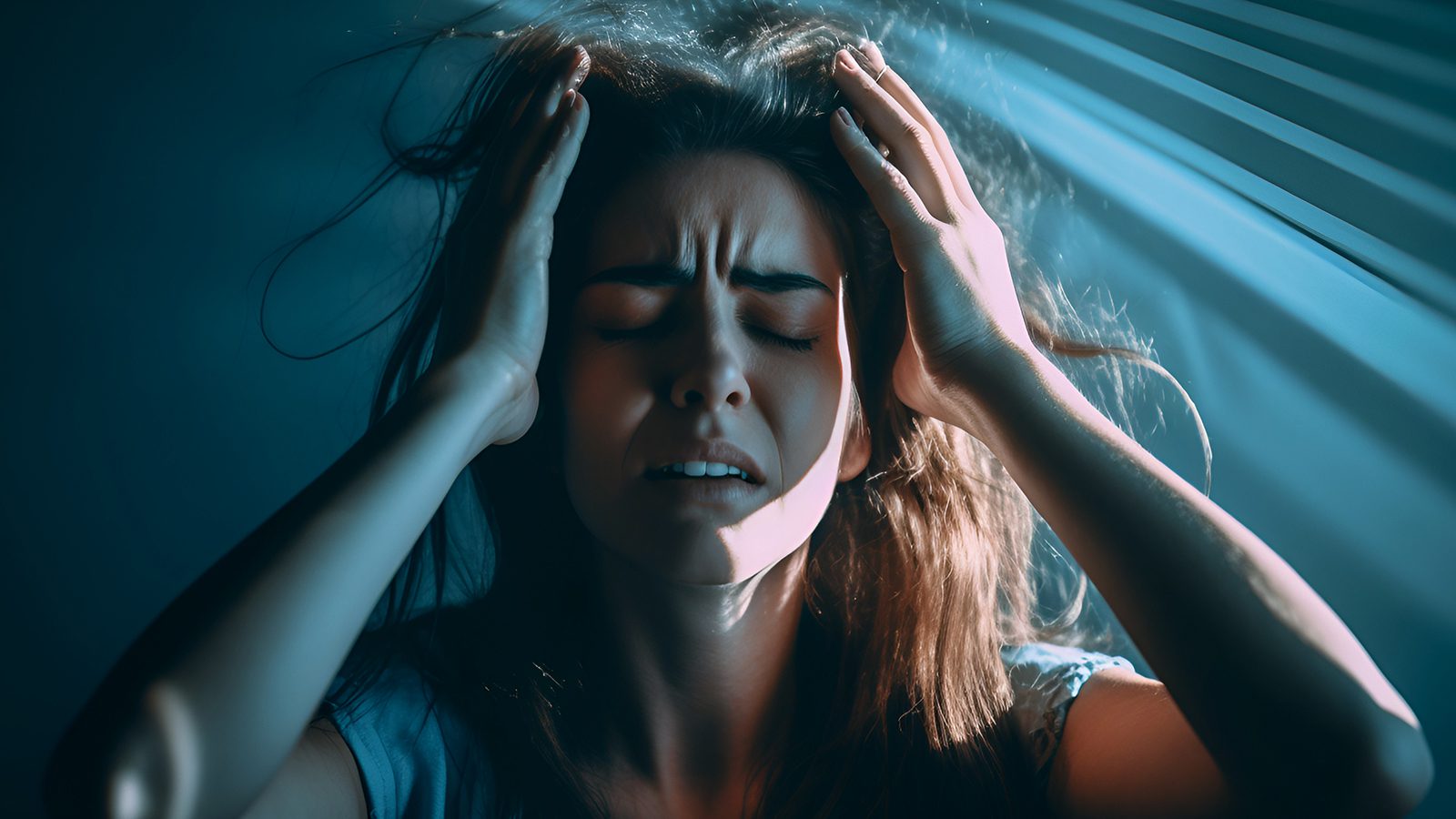People who experience chronic migraines can face severe impairment in their lives. Doctors define these migraines as recurring headaches lasting more than fifteen days a month for three months or more. The pain and discomfort of chronic migraine symptoms can be so profound that it affects a person’s quality of life.
It can impair your ability to work, socialize, and even perform daily activities. This article will explore the numerous ways to manage chronic migraines without relying on medication. While medication can relieve some, it is not always a viable or preferred option for others. Researching the causes and symptoms of chronic migraines can help you explore non-pharmacological treatment options.
Understanding and managing chronic migraines without medication can effectively reduce the frequency and intensity of migraines. It’s essential to distinguish chronic migraines from episodic migraines, which are less frequent and typically last for a shorter duration. The difference between them is the frequency and duration of headaches. Episodic migraines usually occur less than 15 days per month, while chronic migraines occur more than 15 days per month.
Understanding the causes and symptoms of chronic migraines is essential for finding treatment options and improving quality of life. By developing a comprehensive understanding of chronic migraines, those who suffer from this condition can take control of their symptoms. Ultimately, this can help you enjoy a better quality of life.
Causes and Risk Factors of Chronic Migraines
Chronic migraines can have a complex set of causes and risk factors that contribute to their development. The precise mechanism that causes migraines is still not entirely clear. Researchers have identified several potential reasons and risk factors that could contribute to their onset. One possible factor that may play a role in the development of chronic migraines is genetics. Studies show that migraines are hereditary.
Additionally, specific genes may cause migraines. These include genes that regulate the levels of certain neurotransmitters in the brain. Another potential factor that may contribute to migraines is hormonal fluctuations. Women are likelier to experience migraines than men, and many women report that hormonal changes trigger them.
Specifically, fluctuations in estrogen levels can trigger migraines in some women, leading to more frequent headaches. Environmental triggers can also start migraines. Common triggers include changes in weather, exposure to certain foods or chemicals, and stress. Additionally, lifestyle factors such as lack of sleep, poor nutrition, and lack of exercise may contribute to the onset of migraines.
Common Symptoms
Chronic migraines are associated with a wide range of symptoms that can be very distressing for those who experience them. The most common symptom of migraines is a severe headache, which can last for several hours or even several days. Many describe the headache associated with migraines as throbbing or pulsing, typically on one side of the head.
In addition to headache pain, individuals with migraines may experience sensitivity to light and sound. Nausea and vomiting are also commonplace symptoms of migraines. Plus, some individuals may experience visual disturbances, such as flashing lights or blind spots.
Diagnosis and Evaluation
Diagnosing chronic migraines involves a combination of a thorough medical history and physical examination. Healthcare providers will typically ask about the individual’s headache history, including the headaches’ frequency, duration, and location. During the physical examination, healthcare providers will look for any signs of neurological abnormalities that may indicate an underlying condition. You’ll usually undergo additional tests, such as imaging studies. These will rule out other possible causes of headaches.
To meet the criteria for a chronic migraine diagnosis, an individual must experience headaches for at least fifteen days per month. At least eight of those headaches have to meet the criteria for a migraine headache. Healthcare providers will also evaluate the impact of migraines on the individual’s daily functioning and overall quality of life. This assessment will help create a treatment plan catering to the individual’s needs.
Lifestyle Modifications
Lifestyle modifications are an essential component of managing chronic migraines. Simple changes to diet, exercise, and sleep habits can significantly impact migraine frequency and severity.
Personalizing lifestyle adjustments to the individual’s needs and triggers is essential. Working with a healthcare provider can help individuals identify their triggers and develop a personalized plan for managing migraines.
1 – Diet
Maintaining a healthy, balanced diet might be the most effective way to lower the frequency and severity of migraines. Certain foods, such as chocolate, cheese, and cured meats, can start migraines in some people. Avoiding these trigger foods and incorporating more fruits, vegetables, and whole grains into the diet can help reduce the risk of migraines.
2 – Exercise
Regular exercise is also essential in managing migraines. Exercise helps reduce stress and tension, which can trigger migraines. It is necessary to start slowly and gradually increase the intensity and duration of exercise. Additionally, it is essential to stay hydrated during and after a workout, as dehydration can also trigger migraines.
3 – Sleep
Proper sleep discipline is another critical component of managing chronic migraines. Consistently getting enough restful sleep can help reduce the frequency and severity of migraines. Stick to a consistent sleep routine and refrain from caffeine and alcohol before bed.
Natural Preventive Approaches for Chronic Migraines
Natural preventive approaches can effectively manage chronic migraines and reduce medication needs. Some individuals may benefit from supplements such as magnesium or riboflavin. Discuss any health supplements you want to take with a healthcare provider before starting.
Relaxation methods, such as meditation, deep breathing exercises, or yoga, can also help manage migraines. These techniques help reduce stress and tension, common triggers for migraines.
Stress management is another essential aspect of managing migraines. Identifying and managing stressors can help reduce the frequency and severity of migraines. This can include techniques such as journaling, therapy, or lifestyle modifications to reduce stress.
Non-Medication Acute Treatment Options
Non-pharmacological acute treatment options can effectively manage migraine attacks and reduce the need for medication. Cold or warm packs often help to ease migraine discomfort. Applying a cool compress to the head or neck can help reduce inflammation and constrict blood vessels, relieving pain.
On the other hand, a warm compress can help to relax tense muscles and relieve headache pain. Aromatherapy can also help manage migraine attacks. Certain essential oils, like lavender or peppermint, have pain-relieving properties and can help to reduce stress and tension. Putting three or four drops of essential oil in a diffuser or into a warm bathtub can efficiently handle migraines.
Complementary and Alternative Therapies for Chronic Migraines
Complementary and alternative therapies can complement traditional medical treatments for migraine management.
- Acupuncture, a central element of traditional Chinese medicine, involves putting thin needles into different points of the body. Acupuncture may lower the number and severity of migraines in some people. Find a licensed and trained practitioner for safety. However, acupuncture may not be suitable for individuals with some medical conditions, such as bleeding disorders or pacemakers.
- Biofeedback teaches you how to regulate physical body functions, such as your heartbeat and muscle tightness. This method aims to reduce stress and anxiety. Biofeedback helps reduce the frequency and intensity of migraines. It’s beneficial when used in combination with other treatments.
- Massage therapy involves manipulating the body’s soft tissues to relieve tension and reduce pain. Massage therapy can effectively reduce the frequency and severity of migraines, particularly when combined with other treatments.
Coping Strategies and Support for Chronic Migraines
Coping with chronic migraines can be challenging, but several strategies can help individuals manage their symptoms and improve their quality of life.
- Self-care practices: Take care of your daily needs to lower your odds of a headache.
- Eating a balanced diet.
- Regular exercise.
- Maintaining good sleep hygiene can help reduce the frequency and severity of migraines.
- Dehydration can trigger migraines, so drinking plenty of water throughout the day is essential.
- Stress Management: Stress can trigger migraines, so finding ways to manage stress is important. For example, try deep breathing exercises, meditation, or yoga, can be helpful. Also, do things you enjoy and help you de-stress, such as reading or bathing.
- Seeking support: Speaking to a healthcare provider or mental health expert about strategies for managing migraines can be helpful. Joining a support group can also provide emotional support and valuable tips for managing migraines.
- Avoiding triggers: Finding and steering clear of triggers that can cause migraines can help lower the frequency and intensity of migraines. A migraine journal can help you identify triggers by tracking when you have migraines and noting any possible triggers.
- Developing a comprehensive approach: Managing migraines may require a combination of lifestyle changes, complementary therapies, and medication. Working with a healthcare professional to tailor a comprehensive approach to managing migraines is essential.
Final Thoughts on Natural Treatment Options for Chronic Migraines
Chronic migraines can be complex and challenging to manage. However, various natural remedies can help lower the number and intensity of migraines. Proper diagnosis and understanding of triggers are essential for developing a personalized treatment plan.
Lifestyle changes like maintaining a balanced diet, regular exercise, and good sleep hygiene can help prevent migraines. Additionally, non-medication approaches, such as relaxation techniques and stress management, can provide relief during an attack. Other therapies, such as acupuncture and massage therapy, may also work for some individuals.
Exploring various treatment options and developing a comprehensive approach to migraine relief is essential. Also, work with a healthcare professional to identify triggers contributing to migraine attacks.
These may differ for each individual but may involve stress, alterations in sleep habits, and some foods or food additives. With the right remedies and coping methods, improving the lifestyle quality for those with chronic migraines is achievable.
















 Community
Community

